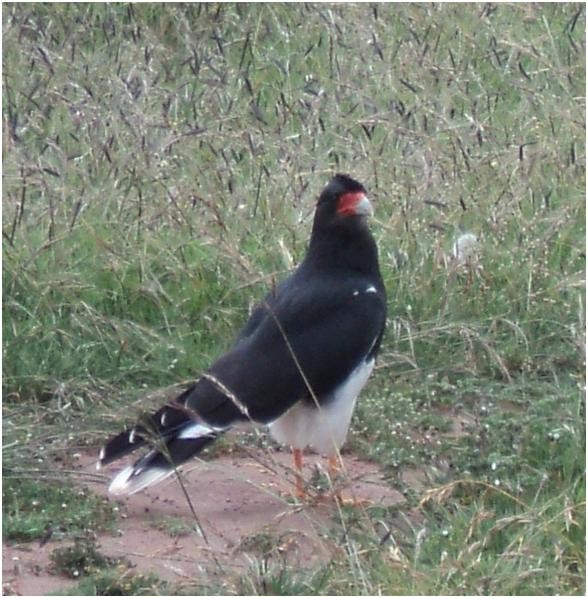Mountain Caracara
A species of andean and Southern South American Caracaras Scientific name : Phalcoboenus megalopterus Genus : andean and Southern South American Caracaras
Mountain Caracara, A species of andean and Southern South American Caracaras
Botanical name: Phalcoboenus megalopterus
Genus: andean and Southern South American Caracaras
Content
Description General Info
 Photo By Eliasquispe , used under CC-BY-SA-3.0 /Cropped and compressed from original
Photo By Eliasquispe , used under CC-BY-SA-3.0 /Cropped and compressed from original Description
A medium-sized caracara with a faintly blue beak tip turning to bright orange, strongly contrasted by the jet-black feathers of its head, back and chest. Its rump, belly and upper tail and undertail coverts are pure white, changing sharply from black to white between the belly and chest. Its black wings have small white shoulder patches and it has white spots on some of its outer primaries. In the 1960s, 17 individual birds were caught and measured and it was noted that the species wing length could range from 358 to 403 mm, giving them a medium-sized wing for a caracara, but a comparatively short tail. Despite an important food source being carcasses, the Mountain Caracara's head and throat remain feathered (unlike some vultures), and only its lores are kept naked. Its legs are yellow and the males and females look similar, while the juveniles are brown. 
Size
55 cm
Nest Placement
Cliff
Feeding Habits
Mountain Caracara are opportunistic feeders, consuming carrion, insects up to 94%, small animals, and arthropods. They exhibit ground foraging, rock flipping, group hunting, and scavenging near human habitation for refuse, adapting to diverse environments for feeding.
Habitat
Mountain Caracaras are endemic to South America and are found throughout several countries, including Bolivia, Chile, Peru and Argentina. They prefer unforested regions where they can perch on power poles or fence posts to overlook a large area. They are usually grouped near cities and along highways. 
Dite type
Carnivorous
General Info
Feeding Habits
Bird food type
Distribution Area
Mountain Caracaras are endemic to South America and are found throughout several countries, including Bolivia, Chile, Peru and Argentina. They prefer unforested regions where they can perch on power poles or fence posts to overlook a large area. They are usually grouped near cities and along highways. 
Species Status
Not globally threatened.
Scientific Classification
Phylum
Chordates Class
Birds Order
Diurnal Birds of Prey Family
Falcons and caracaras Species
Mountain Caracara